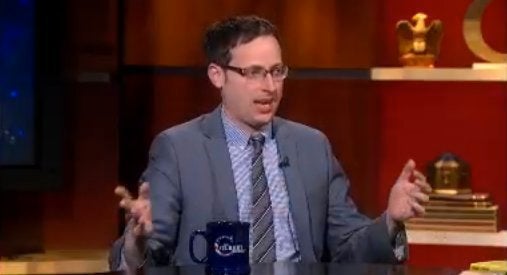
As the first election returns started to filter through on Tuesday evening, it soon became apparent that President Barack Obama was very likely to be re-elected to a second term in office. A comparison of early precinct returns with those registered in 2008 soon confirmed the evidence of the exit polls. Mitt Romney simply had too few votes to seriously challenge the President where it mattered.
Up to this point, the balance of opinion among so-called political experts was pretty evenly divided between those thinking, like Fox News pundits Dick Morris and Michael Barone, that Romney would win by a landslide, and statistical analysts like Nate Silver, of FiveThirtyEight, Sam Wang of the Princeton Election Consortium and Drew Linzer of Votamatic, who believed the opposite.
Meanwhile, a glance at the betting/prediction markets showed what they had always shown -- that the president would be re-elected by a handsome margin, and that nothing that Mr. Romney or his team could do was likely to prevent that happening.
As the first voting stations opened, the bookmakers, the spread betting operators and the betting exchange, Betfair, all converged at a probability of re-election of about 80 percent. Intrade had it a bit lower, but still made President Obama the very clear favorite.
So what about the opinion polls? There was little consensus, and many of them, like Rasmussen and Gallup, had Mitt Romney up in their final published poll, as they had in most of their polls in the days and weeks before.
The national polling average on the RealClearPolitics website also put Romney up for much of the lead-up to the election, although it showed Obama up by 0.7 percent on election day. RealClearPolitics publish a selection of the latest polls and take an average of these to come up with this overall figure.
But is this what the opinion polls were actually showing? The answer depends on whether you look at all the published polls, as broadly available on Pollster, or whether you exclude the polls you don't favor, a methodology favored by RealClearPolitics. Not only do they not include a number of well respected polls in their overall average, they do not recognize them at all!
Taking an average of all the national polls still had it close, but close in the president's favor.
More important than the national picture are the state findings. An analysis of all the state polls showed that President Obama was rather more comfortably ahead, including in the key swing states of Ohio, Virginia, Wisconsin, Colorado, Iowa, Nevada and New Hampshire.
Combining the national and state polls, and awarding them a similar weighting, revealed Mr. Obama to be polling about 2.5 percent ahead of Mr. Romney -- a bit more in the state polls and a bit less in the national polls.
Depending on the statistical analysis used to convert polling advantage into a probability of winning, the polling evidence on the day gave the president somewhere above a 90 percent chance of winning.
In this battle between the Fox News political 'experts' and the sophisticated polling analysts, the betting markets sided heavily with the analysts. To be fair, the raw betting data indicated a slightly more conservative evaluation of Mr. Obama's chances than did the models in the days leading up to the election. But this is for good reason. Why so?
First, the markets allow for the uncertainties a poll-based model can't allow for, such as some late surprise or revelation. The point here is that potential volatility is the friend of the underdog, and while polls are snapshots of opinion, the betting markets are all about forecasting the eventual outcome.
Second, there is a well-established favorite-longshot bias which occurs in most betting markets, whereby the markets tend to slightly under-estimate the true likelihood of the favorite winning, and vice-versa. Prediction market analysts compensate for this to provide an even better forecast.
The markets have been successfully predicting elections since at least 1868, and since the advent of low-margin betting exchanges like Betfair have never been so sophisticated or so accurate. These exchanges differ from traditional betting markets by eliminating the odds-setting bookmaker, instead providing the technology to match up the best offers to back and lay an outcome on offer from all the clients of the exchange. They offer what is essentially a conversation in which the loudest voices, mediated by the focus of money, are generally the best informed.
Mr. Obama was a big winner on election night. But there were others. Statistical modelling was one such winner, and the other big winners were the prediction markets, which had it right all along.
Follow the money! It really does work every time.